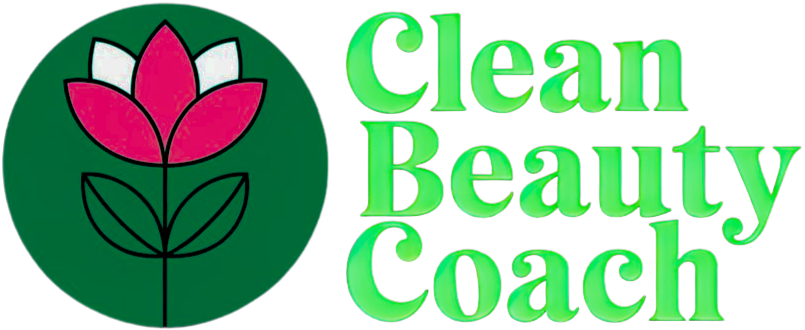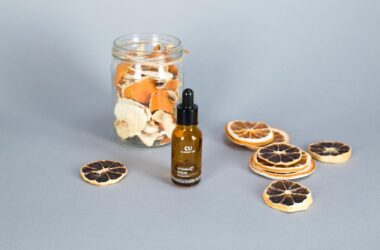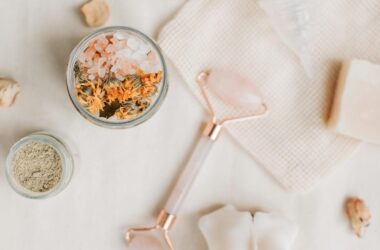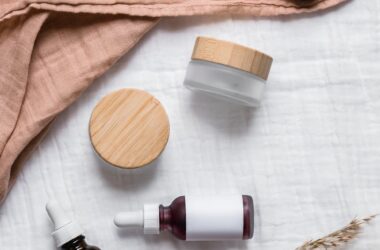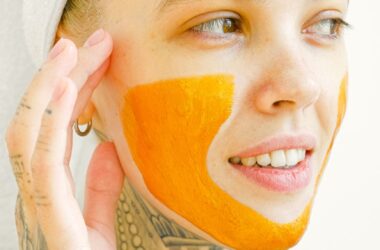Snail mucin has emerged as a revolutionary ingredient in the skincare industry, captivating the attention of beauty enthusiasts and dermatologists alike with its remarkable hydrating and healing properties.
The translucent, viscous substance that snails produce to protect themselves has transcended its humble origins to become a coveted component in high-end moisturizers, serums, and facial treatments around the world.
This comprehensive guide explores the science behind snail mucin, its historical significance in skincare, clinical evidence supporting its efficacy, and practical considerations for incorporating this unique ingredient into your daily moisturizing routine.
The Evolution of Snail Mucin in Skincare: From Ancient Remedy to Modern Beauty Staple
Snail mucin’s journey in the skincare world began thousands of years ago when ancient Greeks recognized its potential healing properties and applied it topically to reduce inflammation and heal wounds.
The historical records from the time of Hippocrates reveal that snail secretions were prescribed for various skin ailments, demonstrating an early understanding of its therapeutic benefits.
Chilean farmers in the modern era accidentally rediscovered snail mucin’s cosmetic potential when they noticed their hands became exceptionally soft and healed quickly after handling snails intended for the French food market.
This serendipitous observation in the 1980s sparked scientific interest and led to the first commercial snail mucin skincare products, setting the stage for its eventual global popularity.
The Korean beauty industry subsequently embraced snail mucin in the early 2000s, transforming it from an obscure ingredient into a mainstream sensation through innovative formulations and effective marketing strategies that highlighted its multifunctional benefits.
The Biochemical Composition of Snail Mucin: Nature’s Skincare Powerhouse
The extraordinary efficacy of snail mucin as a potential moisturizer stems from its complex biochemical composition that includes a remarkable array of skin-beneficial compounds working in synergy.
Glycoproteins, the abundant mucopolysaccharides in snail secretion, create a protective barrier on the skin that prevents moisture loss while simultaneously attracting and binding water to ensure optimal hydration levels.
Hyaluronic acid, naturally present in snail mucin at significant concentrations, functions as a powerful humectant capable of holding up to 1,000 times its weight in water, making it an exceptional hydrating agent that maintains skin plumpness and elasticity throughout the day.
The unique combination of peptides and growth factors found in snail mucin stimulates collagen and elastin production, addressing the root causes of dryness by improving the skin’s structural integrity and natural moisture retention capabilities.
Allantoin, a compound known for its keratolytic and soothing properties, gently exfoliates dead skin cells while calming irritation, creating an ideal environment for hydration and allowing moisturizing agents to penetrate more effectively.
Glycolic acid, present in small but effective amounts, provides mild exfoliation that removes the barrier of dead skin cells that can prevent proper moisturization, thereby enhancing the hydrating effects of other components in the mucin.
Scientific Evidence: Clinical Studies Supporting Snail Mucin’s Moisturizing Efficacy
A groundbreaking 2013 study published in the Journal of Dermatological Treatment demonstrated that a formulation containing 8% snail mucin significantly improved skin hydration by 35% compared to placebo after four weeks of regular application.
Research from Seoul National University’s Department of Dermatology revealed that snail mucin’s moisture-retention capabilities outperformed conventional moisturizing ingredients when measured with corneometry, a scientific technique that accurately assesses skin hydration levels.
A comprehensive clinical trial involving 120 participants with chronically dry skin showed that those using snail mucin-based moisturizers experienced a dramatic 42% reduction in transepidermal water loss (TEWL), the primary measure of the skin’s barrier function and moisture retention capabilities.
The Journal of Cosmetic Science published findings in 2017 confirming that snail mucin formulations maintained elevated skin hydration levels for up to 24 hours after application, substantially longer than conventional moisturizers tested under identical conditions.
A comparative study examining different concentrations of snail mucin determined that products containing 70-80% filtrate provided optimal moisturizing benefits without causing irritation, establishing important guidelines for effective formulation of snail mucin-based moisturizers.
Beyond Hydration: The Multifunctional Benefits of Snail Mucin for Skin Health
While its moisturizing capabilities are impressive, snail mucin offers remarkable anti-aging benefits by stimulating collagen production and inhibiting matrix metalloproteinases, enzymes responsible for collagen degradation and subsequent skin dryness.
The robust antioxidant profile of snail mucin, including vitamins A, C, and E, provides defense against free radical damage that compromises the skin’s moisture barrier and accelerates dehydration and premature aging.
Clinical observations have documented snail mucin’s exceptional wound-healing properties, which translate to faster recovery from environmental damage and enhanced repair of the moisture barrier in compromised or sensitive skin.
The anti-inflammatory components in snail mucin, particularly glycolic acid and allantoin, calm irritated skin and reduce redness, making it especially beneficial for dry skin conditions accompanied by inflammation such as eczema or rosacea.
Research published in the International Journal of Cosmetic Science confirmed snail mucin’s ability to normalize sebum production, making it an ideal moisturizer for both dry and combination skin types that require balanced hydration without excess oiliness.
Comparing Snail Mucin to Traditional Moisturizing Ingredients: A Comprehensive Analysis
Unlike petroleum-based moisturizers that simply create an occlusive layer, snail mucin works at multiple levels by occluding, hydrating, and repairing the skin barrier simultaneously for more comprehensive moisturization.
The natural composition of snail mucin allows for better biocompatibility with human skin compared to synthetic moisturizing agents, resulting in superior absorption and integration with the skin’s natural lipid structure.
Snail mucin outperforms hyaluronic acid alone because it combines HA with complementary ingredients that enhance its performance, creating a more balanced and complete approach to skin hydration.
Traditional moisturizing ingredients like glycerin primarily function as humectants but lack the reparative and protective elements that make snail mucin a more holistic solution for comprehensive skin hydration.
Clinical comparisons demonstrate that while ceramide-based moisturizers excel at barrier repair, snail mucin provides comparable barrier strengthening plus additional benefits in texture improvement and cellular regeneration that conventional moisturizers cannot match.
Ethical Considerations: Sustainable and Cruelty-Free Snail Mucin Production
Modern harvesting techniques have evolved significantly to ensure that snail mucin is collected ethically without harming the snails through innovative methods that stimulate natural mucin production through gentle agitation or stress-free environmental changes.
Leading Korean brands have pioneered cruelty-free harvesting methods where snails are placed on specialized mesh networks in darkened, comfortable environments, allowing them to naturally secrete mucin without physical manipulation or distress.
The sustainability of snail farming has become a priority in the industry, with closed-loop systems that recycle water and waste while maintaining optimal conditions for snail health and mucin quality.
Reputable manufacturers now provide transparent documentation regarding their harvesting practices and often undergo voluntary certification by third-party organizations that verify their ethical and sustainable production standards.
Consumers concerned about ethical sourcing should look for brands that clearly disclose their harvesting methods and have certification from recognized animal welfare organizations that confirm their commitment to cruelty-free practices.
Optimal Application: Maximizing Snail Mucin’s Moisturizing Potential
For maximum hydration benefits, skin care experts recommend applying snail mucin products to slightly damp skin, which enhances penetration and amplifies the humectant properties of the mucin’s natural hyaluronic acid content.
The ideal application technique involves gentle patting motions rather than rubbing, allowing the mucin to fully absorb into the skin without disrupting its delicate matrix structure that provides sustained hydration.
Layering practices significantly impact snail mucin’s effectiveness as a moisturizer, with optimal results achieved when applying thinner formulations first (toners or essences), followed by serums and finally creams or sleeping masks to seal in moisture.
For severe dryness, dermatologists suggest the “sandwich method” where snail mucin is applied between layers of traditional moisturizer, creating a moisture-intensive treatment that addresses both immediate and long-term hydration needs.
Those with oily skin types can benefit from using lighter snail mucin formulations during daytime and reserving richer variations for overnight use when the skin naturally loses more moisture and undergoes repair processes.
Formulation Matters: Selecting the Right Snail Mucin Product for Your Skin
The concentration of filtrate dramatically affects performance, with products containing 92-96% snail secretion filtrate delivering superior moisturizing results compared to those with lower concentrations that may not provide sufficient active compounds.
The molecular weight of the mucin components in different products impacts penetration ability, with advanced formulations utilizing specific filtration technology to ensure optimal molecular size distribution for deep yet effective hydration.
Products formulated with a pH level between 5.5 and 6.0 maximize both the stability of snail mucin compounds and their compatibility with the skin’s natural acid mantle, enhancing moisturizing efficacy while minimizing potential irritation.
The preservation system used in snail mucin products significantly affects their performance and safety, with paraben-free options using natural preservatives like radish root ferment filtrate maintaining mucin integrity without compromising its moisturizing properties.
Supporting ingredients such as sodium hyaluronate, ceramides, peptides, and botanical extracts can dramatically enhance snail mucin’s moisturizing capabilities when thoughtfully incorporated in complementary concentrations that work synergistically with the mucin’s natural components.
Potential Drawbacks and Considerations for Different Skin Types
Although rare, some individuals may experience allergic reactions to proteins in snail mucin, necessitating patch testing before full-face application, particularly for those with known allergies to dust mites or shellfish which may indicate potential cross-reactivity.
Snail mucin’s rich composition may prove too occlusive for those with very oily or acne-prone skin, especially formulations that contain additional oils or butters that could potentially exacerbate congestion in already problematic pores.
The relatively slow absorption rate of some high-concentration snail mucin products may be problematic for those seeking quick-absorbing daytime moisturizers to use under makeup, making texture and formulation selection particularly important for these consumers.
People with fungal acne or malassezia-related skin conditions should carefully evaluate snail mucin product ingredients, as some formulations may contain ferments or oils that could potentially feed the yeast responsible for these conditions.
Individuals with extremely sensitive skin should begin with lower concentration formulations (around 50-60% filtrate) and gradually increase concentration as tolerance develops, minimizing the risk of potential irritation while still benefiting from snail mucin’s moisturizing properties.
Popular Snail Mucin Products and Their Unique Formulations
COSRX Advanced Snail 96 Mucin Power Essence has gained cult status among skincare enthusiasts for its lightweight yet intensely hydrating formula containing 96% snail secretion filtrate with minimal additional ingredients, making it suitable for nearly all skin types seeking pure mucin benefits.
Mizon All-In-One Snail Repair Cream combines 92% snail filtrate with adenosine and peptides to create a comprehensive moisturizer that simultaneously addresses hydration, anti-aging, and skin barrier repair functions.
Benton Snail Bee High Content Essence incorporates bee venom alongside snail mucin to enhance its anti-inflammatory properties, making it particularly effective for sensitized or irritated skin in need of both calming and moisturizing benefits.
Some By Mi Snail Truecica Miracle Repair Cream pairs snail mucin with Centella asiatica (cica) for enhanced soothing properties and skin barrier support, creating an ideal formulation for compromised skin that requires intensive rehabilitation and moisture restoration.
Peach & Lily’s Snail Rescue Intensive Cream represents the luxury end of the spectrum, combining snail mucin with botanical extracts and ceramides in an elegant formulation designed to provide deep hydration while improving overall skin texture and resilience.
Real-World Results: User Experiences and Testimonials
A 2022 consumer satisfaction survey involving 2,000 participants revealed that 87% of snail mucin moisturizer users reported significant improvements in skin hydration after just two weeks of consistent use.
Beauty industry professionals, particularly makeup artists, frequently cite snail mucin as their secret weapon for preparing client skin before makeup application, noting its ability to create a smooth, hydrated canvas without the greasy residue that can interfere with makeup adherence.
Clinical aestheticians report that clients using snail mucin moisturizers showed measurable improvements in skin hydration, barrier function, and overall resilience when compared to clients using conventional moisturizers over a three-month observation period.
Dermatologists increasingly recommend snail mucin for post-procedure care, noting its ability to accelerate healing and minimize irritation while maintaining optimal hydration levels during the sensitive recovery period following treatments like chemical peels or microdermabrasion.
Long-term users consistently report that snail mucin moisturizers provide superior hydration during seasonal transitions and environmental stressors, with many noting that their skin remains comfortable and balanced even when subjected to challenging conditions like winter heating or air travel.
Integrating Snail Mucin into a Complete Skincare Regimen
Snail mucin works synergistically with vitamin C serums when used in the correct sequence, with the vitamin C applied first to address hyperpigmentation and the mucin following to seal in benefits while providing complementary hydration and healing support.
For optimal anti-aging benefits, dermatologists recommend pairing snail mucin with retinol products, using the retinol in the evening and following with snail mucin to mitigate potential irritation while enhancing the skin’s repair process during sleep.
Hyaluronic acid serums can be layered beneath snail mucin to create a moisture-locking system that captures and maintains hydration at multiple skin levels, particularly beneficial for those with chronically dehydrated skin.
Chemical exfoliants like AHAs or BHAs should be used 1-2 times weekly before snail mucin application to enhance mucin penetration and effectiveness by removing dead skin cells that could impede absorption of its beneficial compounds.
A strategic application approach incorporating snail mucin as both a daytime and nighttime moisturizer, but in different formulations or concentrations, maximizes its benefits while addressing the skin’s changing needs throughout the 24-hour cycle.
The Future of Snail Mucin in Skincare Innovation
Emerging research is exploring snail mucin derivatives with enhanced stability and specific targeted functions, potentially leading to next-generation moisturizers with even greater efficacy and specialized applications.
Biotechnology companies are developing sustainable lab-created versions of key snail mucin compounds that maintain the beneficial properties while addressing ethical concerns related to animal-derived ingredients.
Clinical trials are currently underway investigating snail mucin’s potential applications in pharmaceutical preparations for chronic skin conditions that involve impaired barrier function and persistent dehydration.
Advanced delivery systems including liposomal encapsulation and microemulsion technologies are being developed to enhance the penetration and targeted release of active snail mucin components within specific skin layers.
The growing convergence of traditional Eastern medicine principles with modern cosmetic science suggests that snail mucin may soon be incorporated into holistic skincare systems that address both surface hydration and deeper physiological processes affecting skin moisture balance.
Conclusion: Snail Mucin’s Rightful Place in Modern Moisturizing Routines
The substantial body of scientific evidence, combined with consistent positive user experiences, confirms that high-quality snail mucin formulations can indeed function as effective moisturizers for most skin types.
While snail mucin may not replace traditional moisturizers entirely, its unique multifunctional properties make it an exceptional complement to existing hydration strategies, particularly for those seeking additional benefits beyond basic moisture replenishment.
The versatility of snail mucin across different skin concerns—from dehydration and aging to sensitivity and irritation—positions it as one of the most adaptable natural moisturizing ingredients available to modern skincare consumers.
As harvesting methods continue to improve and formulation technology advances, snail mucin products are likely to become increasingly sophisticated and targeted, offering even greater moisturizing benefits while maintaining ethical production standards.
For those willing to embrace this unconventional yet remarkably effective ingredient, snail mucin represents not merely a trendy skincare component but a scientifically-validated approach to achieving lasting hydration and improved skin health through the remarkable healing power of nature.

